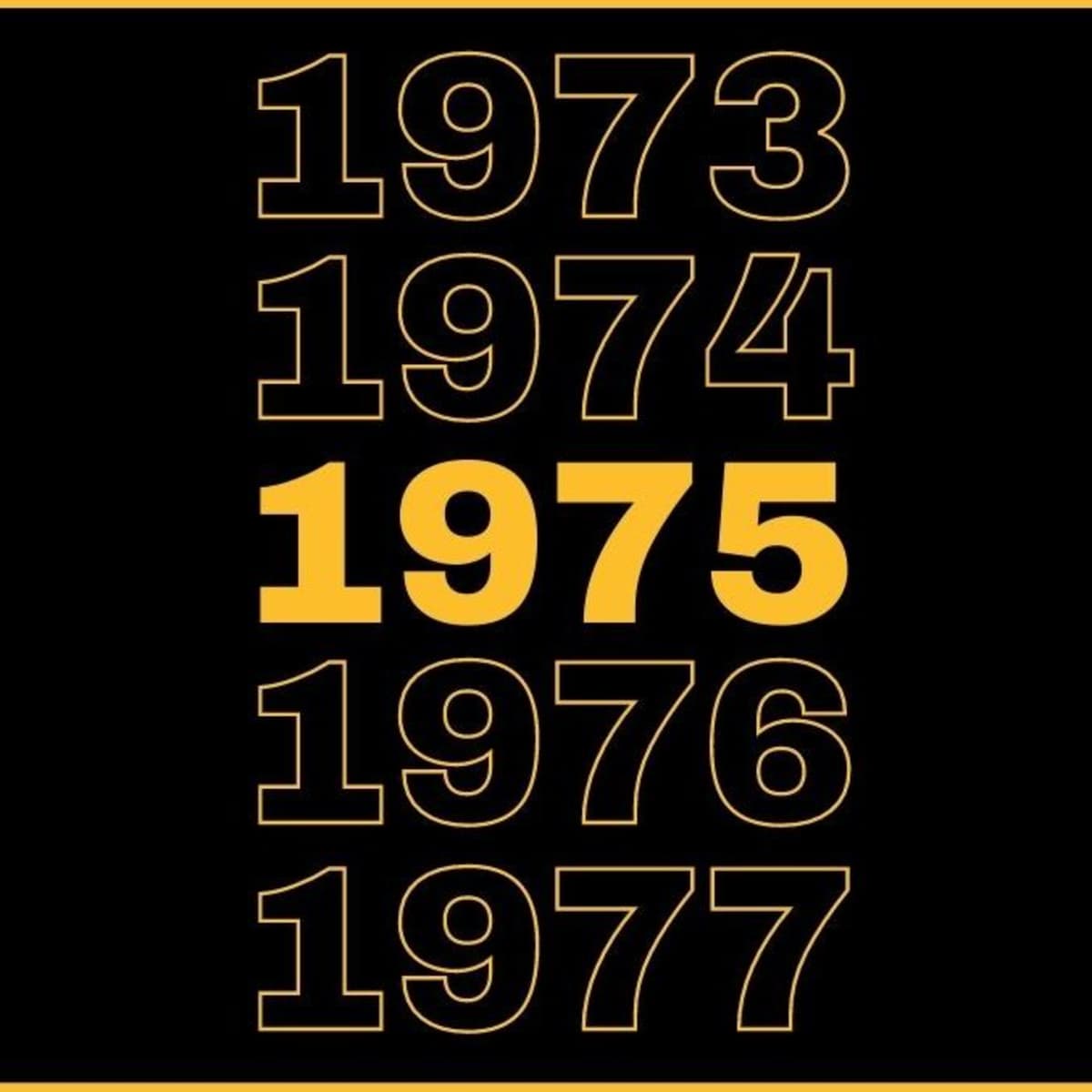1975 Chevy Trucks For Sale: Your Comprehensive Guide to Owning a Classic Square Body pickup.truckstrend.com
The rumble of a V8, the unmistakable lines of its rugged body, and the promise of open roads – few vehicles evoke the spirit of classic American motoring quite like a 1975 Chevrolet truck. As the inaugural year for the iconic "Rounded-Line" or "Square Body" C/K series, the 1975 Chevy truck holds a special place in the hearts of automotive enthusiasts, collectors, and those simply seeking a tangible piece of history. These trucks are more than just utilitarian workhorses; they represent an era of robust design, mechanical simplicity, and enduring style.
Whether you’re a seasoned collector looking for a pristine showpiece, a DIY enthusiast eager for a rewarding restoration project, or someone who simply desires a unique daily driver with character, the market for 1975 Chevy trucks for sale is vibrant and diverse. This comprehensive guide will navigate you through the world of buying one of these timeless machines, offering insights into their appeal, what to look for, where to find them, and what to expect on your journey to ownership.
1975 Chevy Trucks For Sale: Your Comprehensive Guide to Owning a Classic Square Body
The Enduring Appeal of the 1975 Chevy Truck
Why do these nearly five-decade-old trucks continue to captivate buyers? The reasons are manifold:
- Iconic "Square Body" Design: The 1975 model introduced the highly popular C/K "Rounded-Line" generation, characterized by its sharp, angular styling that earned it the "Square Body" moniker. This design, which continued with minor changes until 1987 (and 1991 for R/V series), is instantly recognizable and widely adored.
- Robust and Reliable Engineering: Built during an era when trucks were engineered for durability, the 1975 Chevys are renowned for their rugged frames, dependable powertrains, and relatively straightforward mechanical systems. Many have survived decades of hard work and are still going strong.
- Versatile Platform: From humble work trucks to luxurious Silverado trims, and from two-wheel-drive street cruisers to capable 4x4s, the 1975 Chevy platform offered immense versatility. This makes them ideal candidates for a wide range of uses, from hauling and towing to custom builds and off-road adventures.
- Excellent Parts Availability: Due to their long production run and immense popularity, the aftermarket for Square Body parts is thriving. Nearly every component, from body panels and interior pieces to engine and suspension components, is readily available, making restoration and maintenance a far less daunting task than for many other classics.
- Nostalgia and Investment Potential: For many, these trucks represent a simpler time, evoking fond memories. Beyond sentiment, well-maintained or professionally restored 1975 Chevy trucks can also appreciate in value, making them a potentially sound investment.

Key Features and Models of the 1975 Chevy C/K Series
Understanding the different configurations available in 1975 is crucial for finding the right truck for your needs.
- C-Series (2-Wheel Drive) & K-Series (4-Wheel Drive):

- C10/K10: Half-ton (1/2-ton) trucks, the most common and popular for daily driving and customization.
- C20/K20: Three-quarter-ton (3/4-ton) trucks, heavier duty with larger brakes and suspension, often used for towing.
- C30/K30: One-ton (1-ton) trucks, the heaviest duty, frequently found as duallys (dual rear wheels) for serious hauling.
- Engine Options: A range of reliable powerplants was offered:
- Inline-6: 250 cu in (4.1L) and 292 cu in (4.8L) – known for their torque and longevity.
- Small-Block V8: 305 cu in (5.0L) and 350 cu in (5.7L) – the most popular choices, offering a good balance of power and efficiency, and highly customizable.
- Big-Block V8: 454 cu in (7.4L) – offered in heavier duty models, providing immense power for towing.
- Transmission Options:
- Manual: 3-speed or 4-speed manual transmissions were common.
- Automatic: Turbo-Hydramatic (TH350 or TH400) automatics offered smooth shifting.
- Body Styles:
- Regular Cab: The most prevalent, with single bench seating.
- Crew Cab: Rare for 1975, offering four doors and additional seating.
- Blazer (K5) & Suburban: While technically distinct, these SUV variants shared the Square Body platform and are highly sought after, especially the K5 Blazer with its removable hardtop.
- Trim Levels: From basic to luxurious, trim levels dictated interior amenities and exterior brightwork:
- Custom Deluxe: Base model.
- Scottsdale: Mid-range with more comfort features.
- Cheyenne: Upscale, with additional chrome and interior refinements.
- Silverado: Top-tier, offering plush interiors, full instrumentation, and premium exterior trim.
- 1975 Specifics: This year marked the introduction of catalytic converters for emissions control, meaning many models came equipped with single exhaust systems and unleaded fuel requirements.
:max_bytes(150000):strip_icc():focal(999x0:1001x2)/the-1975-121722-02-2000-dec1a434fe3645baa1732663cf205ba1.jpg)
Where to Find 1975 Chevy Trucks For Sale
The search for your ideal classic truck can be an adventure in itself. Here are the most common avenues:
- Online Marketplaces:
- General Classifieds: Craigslist, Facebook Marketplace, and eBay Motors are excellent starting points for a wide range of conditions and prices. Be wary of scams and always verify information.
- Specialized Classic Vehicle Sites: Websites like ClassicCars.com, Hemmings, AutoTrader Classics, and Bring a Trailer often feature higher-quality or more unique examples, sometimes at premium prices.
- Dedicated Forums and Social Media Groups: Online communities for Square Body enthusiasts are invaluable resources, often featuring "for sale" sections where you can connect directly with sellers who understand these trucks.
- Classic Car Dealerships: Many dealerships specialize in vintage vehicles. While prices might be higher due to dealer markups, you often get a pre-inspected vehicle and potentially some form of warranty or support.
- Auctions: Major automotive auctions like Mecum, Barrett-Jackson, and local estate auctions can be great places to find trucks. Be prepared for competitive bidding and understand that "as-is" sales are common.
- Word-of-Mouth & Local Listings: Don’t underestimate the power of local classifieds, car shows, and simply asking around. Many gems are found through personal connections.
What to Look For When Buying a 1975 Chevy Truck: An Inspection Guide
Thorough inspection is paramount when buying any classic vehicle. Neglecting this step can lead to costly surprises down the road.
- Rust: The Number One Enemy: Square Body trucks are notorious for rust. Inspect these critical areas:
- Cab Corners and Rocker Panels: Look inside and out.
- Floor Pans: Lift floor mats and check under the carpet.
- Fenders and Wheel Wells: Especially around the inner fender wells.
- Bed: Check the bed floor, inner walls, and tailgate.
- Frame: Inspect the entire frame for cracks, bends, or severe rust, especially near suspension mounting points.
- Engine & Drivetrain:
- Cold Start: Listen for unusual noises (knocks, rattles, excessive lifter noise).
- Smoke: Blue smoke (oil burning), white smoke (coolant), or black smoke (rich fuel mixture) all indicate issues.
- Leaks: Check for oil, coolant, transmission fluid, or power steering leaks.
- Transmission: Test all gears, look for smooth shifting (automatic) or proper clutch engagement (manual). For 4x4s, engage all transfer case settings.
- Differential: Listen for hums or clunks.
- Chassis & Suspension:
- Steering: Check for excessive play in the steering wheel.
- Bushings: Inspect suspension and body mount bushings for cracks or deterioration.
- Shocks: Look for leaks or obvious wear.
- Brakes: Test pedal feel (spongy, hard), listen for grinding.
- Tires: Check for even wear and tread depth.
- Interior & Electrical:
- Seat & Dash: Look for rips, cracks, or sun damage.
- Gauges: Ensure all gauges (speedometer, fuel, temp, oil pressure) are functional.
- Lights: Test all exterior and interior lights.
- HVAC: Check if the heater and AC (if equipped) work.
- Windows & Wipers: Test operation.
- Documentation: Always ask for the title (ensure it’s clear and matches the VIN), service records, and any ownership history. This can reveal a lot about the truck’s past.
Restoration vs. Driver: Understanding Condition and Value
The condition of a 1975 Chevy truck directly correlates with its price and the effort required post-purchase.
- Parts/Donor Truck: These are typically very rough, non-running, or severely rusted vehicles, bought primarily for their salvageable components. Expect to pay the least.
- Project Truck/Rough Driver: These trucks run and drive, but require significant mechanical, body, or interior work. They are ideal for those who enjoy hands-on restoration and have the time and budget for it. This category offers the most opportunity for value creation.
- Good Driver Quality: These are functional, presentable trucks that can be enjoyed immediately. They might have minor cosmetic flaws or need some small mechanical attention, but are generally reliable. This is a popular sweet spot for many buyers.
- Restored/Show Quality: These trucks have undergone professional, high-quality restorations, often to better-than-new condition. They command the highest prices and are typically bought by collectors or those who want a turn-key classic.
Practical Advice and Actionable Insights
- Set a Realistic Budget: Beyond the purchase price, factor in costs for registration, insurance, immediate repairs, and potential upgrades. Restoration costs can quickly exceed the purchase price.
- Do Your Homework: Research common issues for the 1975 model year. Join online forums; the Square Body community is vast and incredibly helpful.
- Get a Pre-Purchase Inspection (PPI): If you’re not mechanically inclined, hire a trusted mechanic specializing in classic vehicles to inspect the truck before you buy, especially if purchasing from a distance.
- Negotiate: Always negotiate the price. Most sellers expect it, especially for classic vehicles.
- Be Patient: The right truck might not appear overnight. Don’t rush into a purchase just because you’re eager.
- Consider Classic Car Insurance: Standard auto insurance policies may not adequately cover the unique value of a classic truck. Look into specialized classic car insurance providers.
1975 Chevy Trucks For Sale: Estimated Price Guide
Please note: Prices are highly variable based on geographical location, specific engine/transmission, trim level, originality, and the overall quality of restoration or maintenance. This table provides general estimates.
| Model Type | Condition Category | Estimated Price Range (USD) | Key Factors Influencing Price |
|---|---|---|---|
| C10 (2WD) | Parts/Donor | $1,000 – $4,000 | Heavy rust, non-running, missing components, salvage title. |
| Project/Rough Driver | $4,000 – $12,000 | Needs significant mechanical/body work, rust repair, running but rough. High potential for customization. | |
| Good Driver | $12,000 – $25,000 | Solid runner, presentable, minor cosmetic flaws, minimal rust. Ready to enjoy. | |
| Restored/Show | $25,000 – $60,000+ | Professional restoration, excellent paint, new interior, rebuilt drivetrain, rare options (e.g., Silverado trim, big block). | |
| K10/K20 (4WD) | Parts/Donor | $1,500 – $5,000 | Heavy rust, non-running, 4×4 issues. |
| Project/Rough Driver | $5,000 – $15,000 | Needs significant work, rust, 4×4 system check. Can be more complex to restore due to 4×4 components. | |
| Good Driver | $15,000 – $30,000 | Solid 4×4, presentable, minor flaws, functional. Ready for off-road or daily driving. | |
| Restored/Show | $30,000 – $70,000+ | High-quality restoration, fully functional 4×4, often lifted or customized, rare options. | |
| C30/K30 (1-Ton) | Project/Driver | $3,000 – $18,000 | Often work trucks, condition varies widely. Can be cheaper than 1/2 tons due to niche market. Dually models add complexity. |
| Restored | $18,000 – $45,000+ | Niche market for restored heavy-duty trucks, often customized for towing or unique looks. | |
| Blazer/Suburban | Project/Driver | $5,000 – $25,000 | Highly sought after, especially Blazers with removable hardtops. Rust issues vary, particularly around tailgates. |
| Restored/Show | $25,000 – $80,000+ | Top-tier restorations, rare trim levels (e.g., Cheyenne/Silverado Blazer), often with upgraded modern components. |
Disclaimer: These prices are estimates only and can fluctuate significantly based on market demand, regional variations, specific vehicle options (e.g., engine, transmission, A/C, power windows), and the quality/completeness of any restoration or maintenance. Always conduct thorough research and inspection.
Frequently Asked Questions (FAQ) about 1975 Chevy Trucks
Q: Why choose a 1975 model specifically over other Square Body years?
A: The 1975 model is notable as the first year of the Square Body generation. It offers a blend of classic design with slightly more modern features like catalytic converters (though often removed by owners) and front disc brakes as standard. Parts availability is excellent due to its place in a long production run.
Q: Are parts hard to find for a 1975 Chevy truck?
A: No, quite the opposite! Thanks to their immense popularity and the long production run of the Square Body platform, the aftermarket for these trucks is robust. Most mechanical, interior, and body parts are readily available, either as reproductions or used.
Q: What are the most common rust areas I should check?
A: The most common rust spots include cab corners, rocker panels, floor pans, inner and outer fenders, the bed floor and sides, and the frame rails, especially where the body mounts attach.
Q: Can I daily drive a 1975 Chevy truck?
A: Absolutely! With proper maintenance and possibly some modern upgrades (like fuel injection, upgraded brakes, or power steering), a 1975 Chevy truck can be a reliable and enjoyable daily driver. Be prepared for lower fuel economy compared to modern vehicles.
Q: What’s the difference between C and K models?
A: "C" denotes a 2-wheel-drive (2WD) truck, while "K" denotes a 4-wheel-drive (4WD) truck. The number following (e.g., 10, 20, 30) indicates the truck’s weight rating (half-ton, three-quarter-ton, one-ton, respectively).
Q: What kind of fuel economy can I expect?
A: Fuel economy varies significantly depending on the engine (V8 vs. Inline-6), transmission (manual vs. automatic), gearing, and driving style. Generally, expect anywhere from 8-15 miles per gallon (MPG).
Q: Are these trucks good for customization?
A: They are an excellent platform for customization! Their simple design and robust chassis make them popular for everything from engine swaps (LS conversions are very popular) and suspension upgrades (lowering, lifting) to full frame-off restorations and modern conveniences.
Conclusion
The 1975 Chevy truck represents a truly iconic piece of American automotive history. Its timeless Square Body design, rugged reliability, and incredible versatility continue to make it a highly desirable classic. Whether you envision cruising down the highway in a perfectly restored showpiece, tackling weekend projects with a dependable workhorse, or embarking on a rewarding restoration journey, a 1975 Chevy truck offers an unparalleled blend of nostalgia, practicality, and undeniable cool factor.
By understanding the different models, knowing what to look for during an inspection, and approaching the purchase with patience and a clear budget, you can confidently navigate the market for 1975 Chevy trucks for sale. Owning one of these legends is more than just buying a vehicle; it’s investing in a piece of the past that promises a future filled with enjoyment and pride. Embark on your search today, and prepare to turn heads wherever you go.
